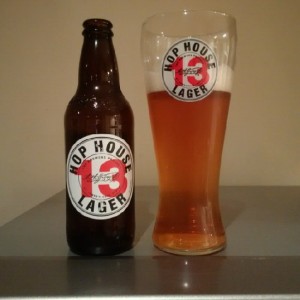 No personal cab, no mystery location but nevertheless a nice Christmas present, the latest chapter of the Brewers Project from Guinness, Hop House 13 Lager. The first things that have to be said are that the branding looks great and that this lager is not really aimed at me.
No personal cab, no mystery location but nevertheless a nice Christmas present, the latest chapter of the Brewers Project from Guinness, Hop House 13 Lager. The first things that have to be said are that the branding looks great and that this lager is not really aimed at me.
What do they say about it? “This double-hopped lager is the next chapter in that project. It’s decidedly modern and totally different. With more ingredients comes more character. 100% Irish-grown malted barley. The distinctive Guinness yeast. A mixture of Australian and American hops runs as an undercurrent through this incredibly deep beer, which is fresh at the surface and complex at the bottom. Our brewers set out to create something that would stimulate your palate and senses alike. From first sip to the lingering finish, this beer is surprising. Sample Guinness Hop House 13 and you’ll experience a lager made with so much more. More hops. More character. More taste. It’s a lively sip with accents of apricot and peach. The flavour deepens into subtle malt with a medium body. Combining our famous Guinness yeast with Irish-grown barley in a lager brewing process, our brewers changed the game.”
What does Rich say about it? That’s all a bit OTT above. What exactly does double-hopped mean? It has Topaz, Galaxy and Mosaic which is a nice mix of hops but there is no noticeable bitterness. Starts quite sweet and I did get the hint of apricot and peach, then a touch of malt and a slightly drier finish. 22 IBU apparently which doesn’t really add up to a crisp finish. The Guinness yeast, who knows?
Well what did you expect? This is a mass market lager, not a craft offering (lagered for 5 days apparently). It is definitely not different or surprising. I’m willing to believe that a lot of care has gone into this and it is not faulty in any way (and it comes in a brown bottle). It’s way cooler in terms of branding than the hideously outdated Fosters (who does drink this nowadays?) which I’d guess is one of the closer competitors. I wish it well in its sector.
As a salesman of genuine craft keg though, I plead to publicans to put it on the ‘commercial’ lager lines and not use up one of your precious ‘craft keg’ lines for this. The crafterati will not be fooled.


![GUINNESS GOLDEN ALE BOTTLE [HI] half](http://intoxicated.me.uk/wp-content/uploads/2015/03/GUINNESS-GOLDEN-ALE-BOTTLE-HI-half-134x300.jpg)